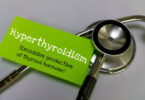How to Heal Your Self With Deep Breathing
Heal Your Self With Deep Breathing: When we’re under stress, our bodies produce a mix of hormones called the stress response.
These hormones can make you feel tense, nervous, or emotionally raw.
They can also leave you feeling like your insides are all in knots.
That’s because they are. When you’re constantly releasing these hormones, you can feel on edge and experience physical symptoms like headaches, muscle aches, and digestive upsets.
Fortunately, healing yourself doesn’t require a visit to a psychiatrist. All you have to do is breathe.
In this article, we’ll explore the science of why deep breathing can ease stress and anxiety and give you simple tips for healing yourself with deep breathing.
What Is Deep Breathing?
Deep breathing is a natural, therapeutic technique that consists of taking deep and relaxed breaths.
Taking deep breaths can help lower your heart rate, release tension in your chest, relieve head pressure, and reduce the effects of stress on the body.
The key to deep breathing is to inhale deeply through your nose and exhale through your mouth.
It’s also essential to keep your throat open–you want to feel as though you’re making an “aaaaahhh” sound when you exhale.
Many people find it helpful to use visualization techniques or to count their breaths from 1 to 10 while they breathe deeply.
Deep Breathing and Depression
Researchers have found that deep breathing can help ease depression.
This is because the “relaxation response” triggered by deep breathing can counteract the stress response.
When you’re under stress, your body produces a mix of hormones called the “fight-or-flight” response.
These hormones are designed to get you ready for an emergency, but they also cause depression, anxiety, and other physical symptoms.
Read More: Tips for Healthy Nutrition in the Office
The good news is that taking deep breaths tells your nervous system to switch from the fight-or-flight mode to the relaxation response.
This helps to regulate your moods and alleviate any physical symptoms caused by stress.
Deep breathing can be as simple as taking a few minutes to focus on your breathing throughout the day. Try counting aloud while inhaling and exhaling deeply to ensure you breathe deeply enough (at least 10 seconds). This will help you relax without feeling so much like you’re trying too hard.
Deep Breathing and Anxiety
When you’re anxious or stressed, your body releases a mix of hormones called the stress response.
These hormones can make you feel tense, nervous, or emotionally raw.
They can also leave you feeling like your insides are all in knots.
That’s because they are. When you’re constantly releasing these hormones, you can feel on edge and experience physical symptoms like headaches, muscle aches, and digestive upsets.
Fortunately, healing yourself doesn’t require a visit to a psychiatrist. All you have to do is breathe.
In this article, we’ll explore the science of why deep breathing can ease stress and anxiety and give you simple tips for healing yourself with deep breathing.
Deep Breathing and Anger
Anger is a natural stress response.
And when you feel anger, your body releases adrenaline.
That’s why deep breathing can help heal your self of anger.
When you inhale, the diaphragm moves down and out, drawing air into the lungs.
This creates space in the chest cavity and contracts the diaphragm muscles, forcing air out of the lungs.
When you exhale, those same muscles relax, allowing air to leave your body.
The process repeats itself in a continuous cycle. This motion can instantly calm your nervous system by slowing your heart rate and reducing blood pressure. What’s more, it can help reset your fight-or-flight response so that you react less emotionally to stressful situations in the future.
How to Start Healing Your Self with Deep Breathing
Deep breathing is a natural way to regulate your body’s stress response and keep it from releasing too many stress hormones.
Best of all, it can help you calm down in any situation.
While deep breathing is an excellent technique for managing stress on the spot, it’s also essential to healing yourself over time. When you feel like you’re in a stressful situation, take some time to breathe deeply and return to a relaxed state. You can also practice deep breathing regularly throughout the day to regulate your body’s stress response system and reduce the emotional and physical symptoms of high stress levels.
Here are four tips for how to start healing yourself with deep breathing:
1) Find A Place To Breathe
Find somewhere quiet, comfortable, free from distractions, and suitable for your breathing session. If possible, find a place where you won’t be interrupted or disturbed by anyone or anything else.
2) Close Your Eyes
Close your eyes when doing deep breathing exercises so you don’t get distracted by visual stimuli around you. This will help ensure that you focus solely on what’s happening inside your body during the exercise rather than outside stimuli. Trust us: it’ll go much faster this way!
3) Set A Goal For The Length Of Your Breathing Session
Set a goal for the length of time that you want to spend with your deep breathing exercises
Conclusion
Don’t let your bad mood ruin the day! Deep breathing can help you calm down and return to a good place.
Try this simple technique—close your eyes, drop your shoulders and take a deep breath through your nose. This is the time to let go of any tension. Let the air fill your lungs, then slowly release it through your mouth. Keep going until you’re feeling.









